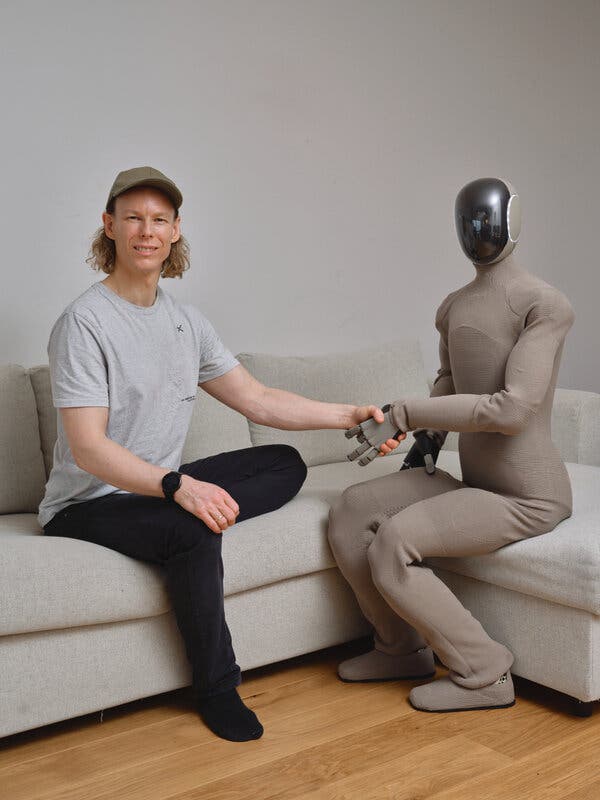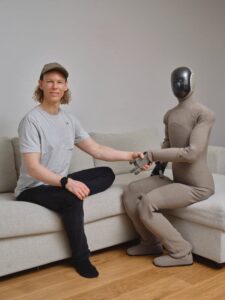Invasion of the Home Humanoid Robots
Dozens of companies are building robots that look like humans. One of them is training a machine to be a butler and will soon test them in homes.

On a recent morning, I knocked on the front door of a handsome two-story home in Redwood City, Calif. Within seconds, the door was opened by a faceless robot dressed in a beige bodysuit that clung tight to its trim waist and long legs.
This svelte humanoid greeted me with what seemed to be a Scandinavian accent, and I offered to shake hands. As our palms met, it said: “I have a firm grip.”
When the home’s owner, a Norwegian engineer named Bernt Børnich, asked for some bottled water, the robot turned, walked into the kitchen and opened the refrigerator with one hand.
Artificial intelligence is already driving cars, writing essays and even writing computer code. Now, humanoids, machines built to look like humans and powered by A.I., are poised to move into our homes so they can help with the daily chores. Mr. Børnich is chief executive and founder of a start-up called 1X. Before the end of the year, his company hopes to put his robot, Neo, into more than 100 homes in Silicon Valley and elsewhere.

His start-up is among the dozens of companies planning to sell humanoids and get them into both homes and businesses. Investors have poured $7.2 billion into more than 50 start-ups since 2015, according to PitchBook, a research firm that tracks the tech industry. The humanoid frenzy reached a new peak last year, when investments topped $1.6 billion. And that did not include the billions that Elon Musk and Tesla, his electric car company, are pumping into Optimus, a humanoid they began building in 2021.






